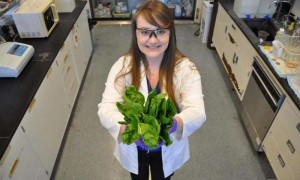A new interactive tool from CDC makes it easier and quicker to see how antibiotic resistance for four germs spread commonly through food—Campylobacter, E. coli O157, Salmonella, and Shigella—has changed over the past 18 years.
Each year in the United States, antibiotic-resistant germs cause 2 million illnesses and 23,000 deaths. Antibiotic-resistant infec tions from germs spread commonly through food cause an estimated 440,000 of those illnesses.
tions from germs spread commonly through food cause an estimated 440,000 of those illnesses.
The NARMS Now: Human Data tool contains information from the National Antimicrobial Resistance Monitoring System (NARMS).
NARMS Now: Human Data allows users to access antibiotic resistance data by bacterial serotype, antibiotic, year (1996-2013), and geographic region. Users can view data on an interactive map or in tables. NARMS Now: Human Data plans to provide access to the most up-to-date antibiotic resistance results by uploading data regularly.
NARMS Now: Human Data can be used to:
– Inform regulatory agency action.
FDA withdrew approval for Enrofloxacin (a fluoroquinolone) used in poultry after the data showed an increase in fluoroquinolone-resistant Campylobacter infections in humans.
– Examine the geographic distribution of resistance.
Researchers have used the data to investigate the geographic distribution of multidrug-resistant Salmonella Typhimurium and Newport infections in the United States.
 Monitor changing trends in resistance.
Monitor changing trends in resistance.
Investigators are using NARMS data to help uncover the reason for increasing antibiotic resistance in a type of Salmonella, I 4,[5],12,:i:-, which has emerged recently in the United States.
Timely Access to Data
CDC developed NARMS Now: Human Data in response to requests from Congress, consumer groups, academia, and the public for timely access to data on antibiotic resistance. The tool is an important step towards President Obama’s Open Government Initiative to foster openness in government and establish a culture of transparency, public participation, and collaboration.
The FDA, on behalf of all the NARMS partner agencies, is also making data available online, NARMS Now: Integrated Data. That data helps users to access antibiotic resistance information from isolates from retail meat and animals, and will soon add Campylobacter and non-typhoidal Salmonella from humans.








